In January 2013, the BBMP forcibly evicted over 5,000 people from Ejipura slum, near Koramangala. Those who protested faced police action and detention. The residents, who were paying rent of Rs 1,000-1,500 for the tin sheds there were too poor to afford rent elsewhere. They also felt cheated – in the mid-2000s, the BBMP Council had passed a resolution that they would be provided flats, and had issued them ‘guruthina cheetis’ (ID cards).
After their eviction, these people were left to fend for themselves. Some lived on the pavements, some left the city, some found accommodation elsewhere, and a few died due to homelessness and trauma.
Today, nine years after the eviction, flats have still not been allotted to these families.
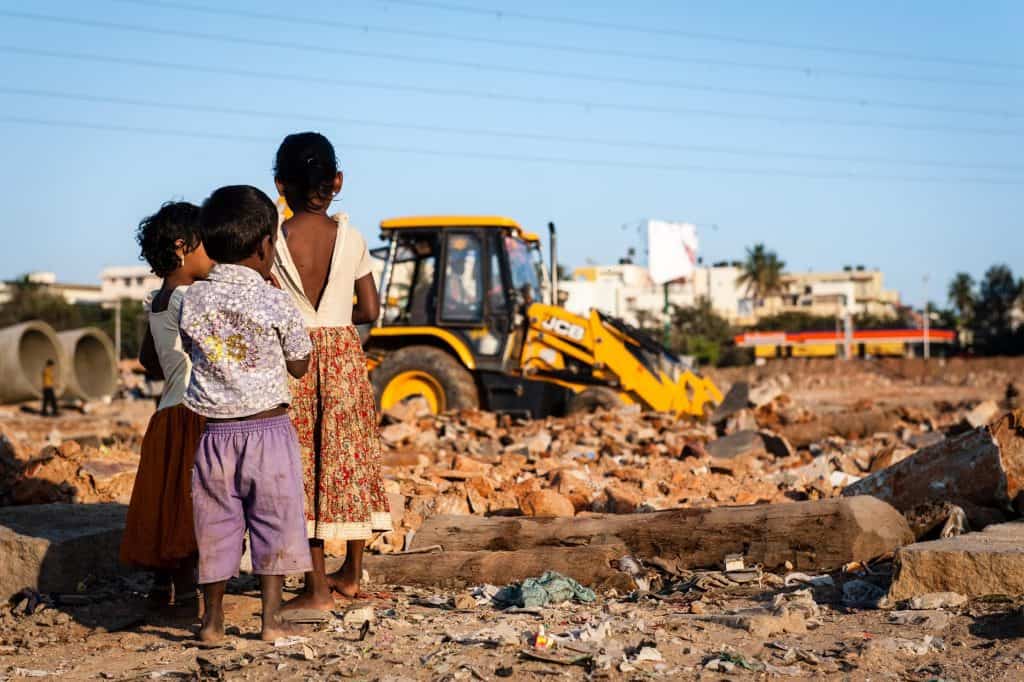
The Ejipura slum was originally the site where BBMP had built EWS (Economically Weaker Section) quarters for a different set of families, 1,512 of whom were allotted these quarters. But the quarters started collapsing in a couple of years due to poor quality of construction. BBMP then built tin sheds for them as alternate accommodation. But most of the original allottees left the site, renting out the sheds to even more deprived families.
It is these tenants who were evicted in 2013, apparently to rebuild the quarters for the original EWS allottees. But, no quarters have been rebuilt at Ejipura so far, as reported in Part 1 of this series. The original allottees are chasing officials to get the reconstruction speeded up.
No allotment yet in alternate site
During the eviction in 2013, the residents who had taken the tin sheds on rent were promised alternate accommodation in quarters at Sulikunte, way outside the city, along Sarjapura Road. But the construction of the Sulikunte quarters was completed only in 2017, four years after the eviction.

Since 2017, some evictees who couldn’t afford rents elsewhere or who had been living on pavements moved into the Sulikunte quarters. Now, around 350 evicted families are living there. The evictees are also disputing the allotment on the grounds that many of the flats were being given to families who had never lived in Ejipura slum.
The Karnataka Slum Development Board (KSDB) has not yet allotted the quarters to the evictees. Also, currently, the quarters lack basic facilities like water, power and street lights.
But residents like Sundhari Raj have no other option. To stay elsewhere in the city she would have to pay a rent of around Rs 5,000 per month, with advance payment of Rs 50,000. Whereas Sundhari’s monthly income is only Rs 7,000, which isn’t enough to meet even the basic necessities of her family of six.

According to a High Court order of 2014, BBMP is responsible for handing over the flats to the residents. BBMP and state government had to set up Grievance Cells in Sulikunte village to quickly address issues faced by the residents. The order also directed the government to set up schools, colleges and hospitals in the village, and to increase the frequency of city buses from the village.
None of this has happened.
Finding work is tough
Sulikunte quarters is located in a desolate patch of land, over half a kilometer from the main Sarjapur road. Residents have to walk over a kilometer to access the Muthanallur Cross bus stop on the main road. Few residents here own private vehicles.
Roy M, an elderly resident here does liaison work (readying records, legal documents, etc) at Mayo Hall, nearly 20km away. When living in Ejipura slum, he used to work at Mayo Hall 20 days a month. However, as the commute from Sulikunte is difficult and expensive (Rs 70 daily), Roy is able to work only 5-6 days a month now. Given the dip in his income, Roy and his wife try to earn small amounts by selling idly batter to fellow residents.
While computerisation has already reduced the work available to Roy, the difficulty in commuting has made things more difficult. “When living at Ejipura, I used to spend 8-12 hours at work,” says Roy. “This is not possible now, because the commute to Mayo Hall itself takes a couple of hours. I also have to stop work before 5.30 pm, so that I can reach the quarters before it’s too dark”.
Reaching the quarters before dark is important since there are no street lights or power here. The area also has a lot of snakes which makes walking at night risky.
It’s riskier for women, adds Sundhari Raja. “Sexual harassment is common,” says Sundhari. “Many women here get back from work at 8-9 pm. It’s very unsafe and we are worried.”
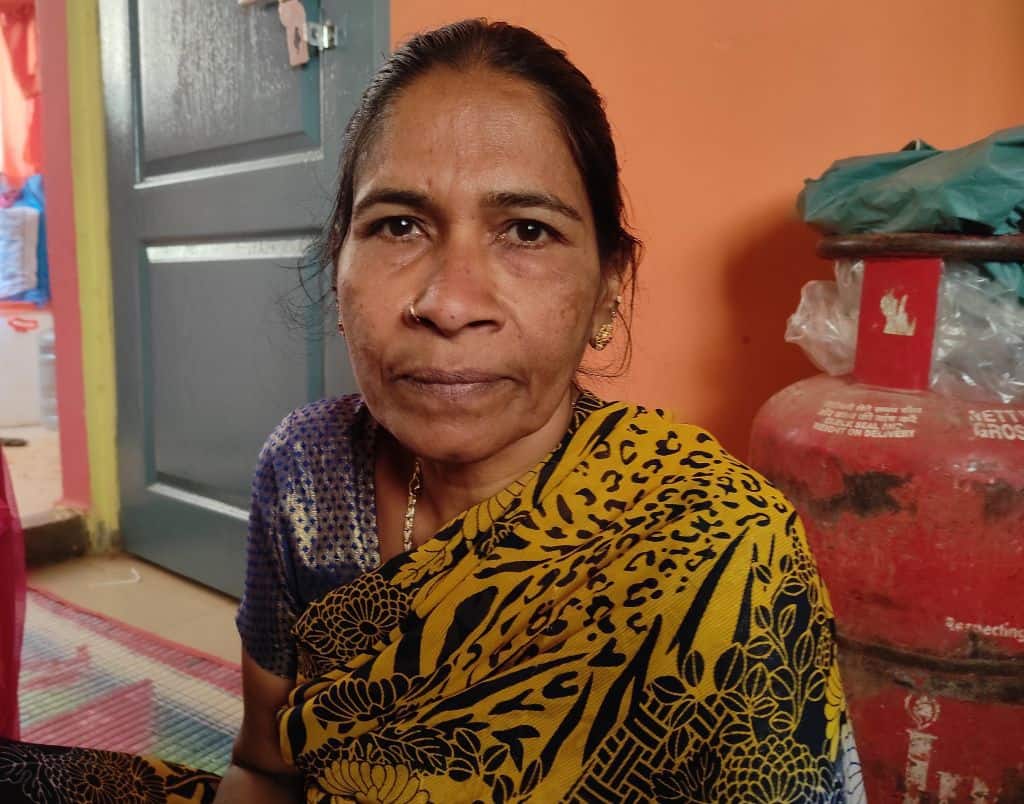
“Labourers, those who do painting work etc have to go to the city to find work,” says Roy. “Here they get work only erratically. Even getting 10 days of work in a month is difficult. When living at Ejipura, people had regular income”.
Sundhari is among the few residents who have a regular job. A cook at a convent six kilometers away in Huskur Gate, she too faces problems with her commute. “I leave for work at 4.45 am,” says Sundhari. “Since there is no bus from here to Huskur Gate at that time, I have to hire an auto which costs me Rs 2,000-2,500 per month. I return home by bus or share auto, which costs Rs 600 per month”.
Sundhari’s employees reimburse much of the travel costs, but given her meagre income they are just able to manage food with their ration cards. Her husband, who does maintenance jobs, does not get regular work. Her daughter, college-going son and two grandchildren are dependent on her.
She hopes to get her grandchildren admitted in a private school where they can learn English. “The private schools nearby are very expensive, so I want to admit them to a private school in Dommasandra 2-3 km away,” she says.
The travel to school is difficult for children too. And those in need of urgent healthcare are at risk as well. Roy recounts the case of a resident who was in a fire accident a couple of months ago. The ambulance took 1.5 hours to arrive and take the person to Victoria Hospital, where he died, says Roy. The private hospitals nearby are too expensive for residents.
No power, water
Residents here aren’t complaining about the structures itself. Each flat, measuring less than 300 sq ft, has a hall, bedroom, kitchen, bathroom and toilet.
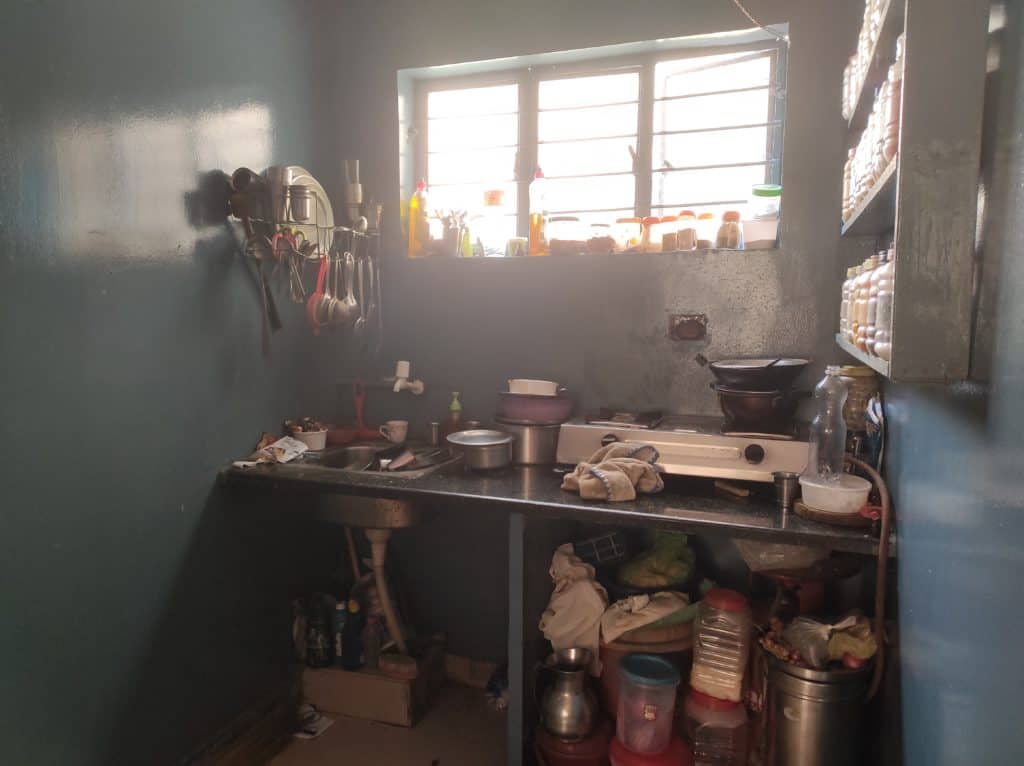
However, there is no power or water supply at all.
The residents had earlier rented a diesel generator, for which each household paid Rs 900 per month. With this, power was available for about five hours every evening. But residents stopped using the generator a few months ago, since they couldn’t pay up anymore. (Many had lost jobs or worked on low salaries during the COVID lockdowns.) Now, a few families use solar power to a limited extent.
Amala Fathima, a resident, says that 2-3 senior citizens had fallen and injured themselves at night since there are no lights. According to her, the biggest impact has been on children’s education. “Children are unable to study or do homework in the evening,” says Amala. “They also missed online classes in the last two years.”
The shops outside charge residents Rs 10-15 to recharge a phone, and Rs 20 to recharge a power bank. Not everyone is able to afford this regularly.
Amala says the EWS premises does have five borewells, but without electricity they are unable to pump water out. Hence residents have to regularly pay for tanker water. Amala says the tanker bill for her two-member family** comes to around Rs 1,200 per month. For most families here, this is a significant part of their income. In summer, the water costs more.
The premises also doesn’t have a proper system for treating sewage. Sewage goes into a pit, and the water has been leaking out of the ground at certain points, says Amala. “Despite approaching local leaders including MLA Aravind Limbavali, there has been no solution to these issues”.
Another major concern in the quarters is the presence of local ‘leaders’ and their goons who dictate the residents’ lives. Sundhari says her son was stabbed after she questioned the malpractices of a leader. “We continue to receive threats, I don’t know what to do as the police has not been helpful”.
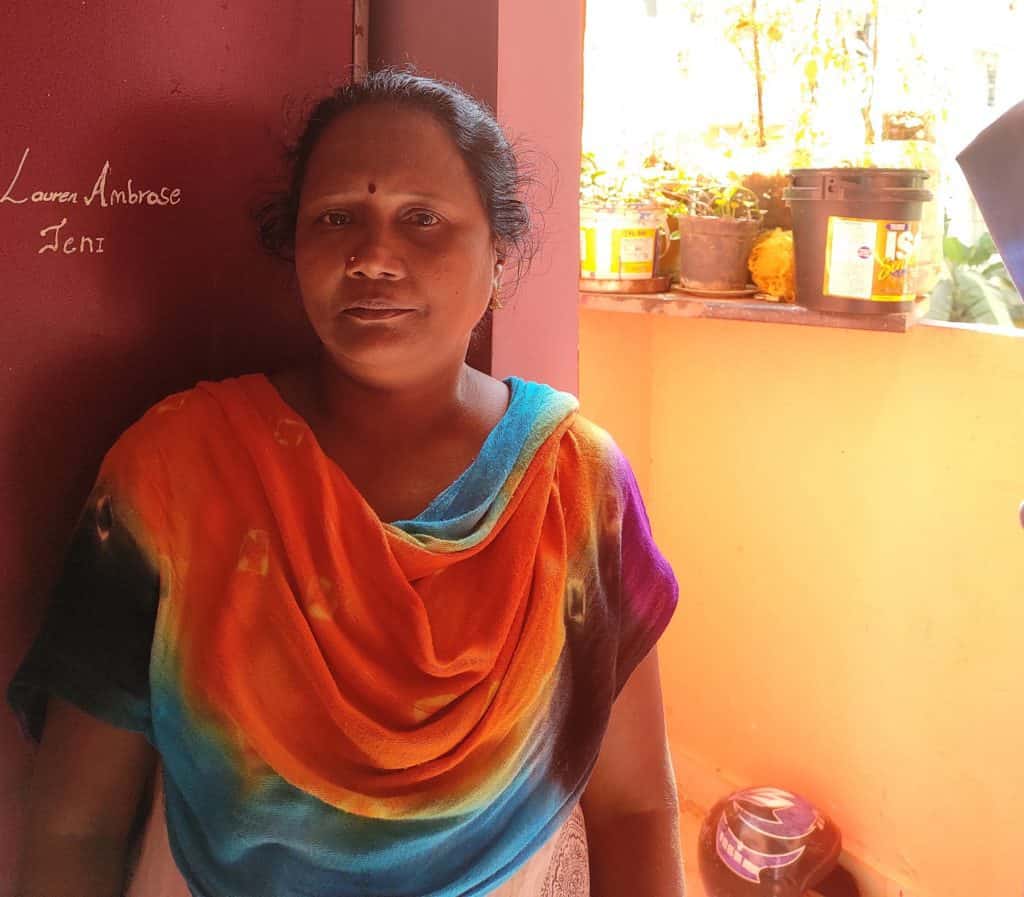
“While residents regularly face harassment and threats by goons, the police does not take action,” says another resident Shantha Mary. As an example, she shares a written complaint sent by a 21-year-old resident to the police regarding the sexual harassment she faced, which received no response.
Those living elsewhere are struggling too
While Sulikunte residents struggle, the evictees living in other parts of the city struggle too. Venkatraman Iyer of the NGO Swabhimaan Trust, which has supported Ejipura evictees, says that around 350 families continue to live in the low-income neighbourhoods around Koramangala. About 300 families had left for their hometowns immediately after the 2013 eviction and he has not been able to trace the remaining 500-odd families, says Venkatraman.
Vaani, 53, has rented an EWS quarter in Rajendra Nagar near Koramangala. The monthly rent here is Rs 3,000, and the advance amount Rs 30,000. Vaani finds it difficult to pay rent. In fact, she had to move her son from a private school to a government one during COVID lockdowns since she was unable to pay his fees.
At the quarters, every block is lined up against the next with little to no space in between. The flats are tucked into white-walled corridors that let in sparse light. But, there is power and water supply, unlike in Sulikunte. Work is easier to come by, and there is a wider choice of government and private schools.
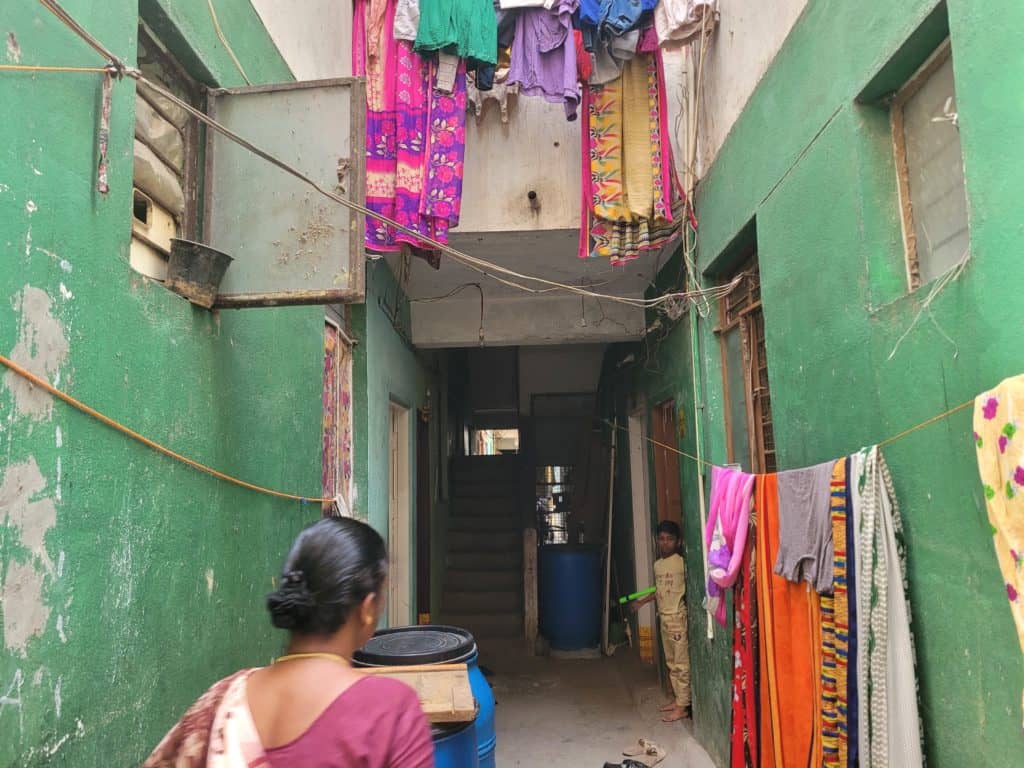
Mary Jacqueline, another Ejipura evictee, lives in the flat her mother owns in Rajendra Nagar, so she doesn’t have to pay rent. She explains why she wouldn’t live in Sulikunte quarters: “There is no power and water over there. There are a lot of grassy and forest-like areas, and snakes are aplenty. If a snake appears at night, how are we to know? We have small children. My mother is old and cannot walk. If I take her there, we cannot travel to the hospital. She will surely collapse halfway.”
Since COVID, evictees living here have had difficulty paying children’s school fees, repaying debts, etc. Many have lost jobs, and like Vaani, have been struggling to pay rent. Yet, they are unsure about ever moving to Sulikunte, given the unavailability of work there and the lack of basic facilities.
[Why is the allotment of quarters in Sulikunte not completed yet? When will residents there get water and power connections? Part 3 of this series will cover these issues.]
[With inputs from Bhoomika Bhagwat]
**Errata: Amala’s family was initially described as a ‘four-member family’, but was later correctly identified as having two members currently.